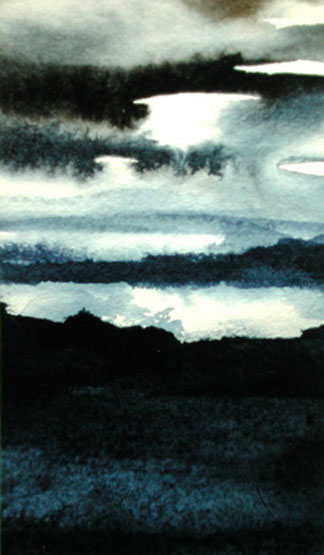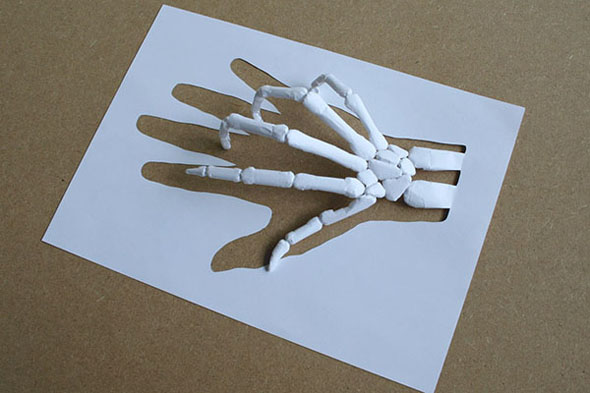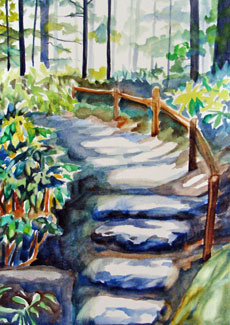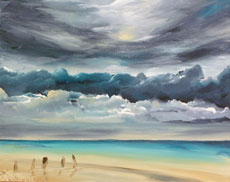One concept that people new into painting have a hard time grasping is that paintings can often go through stages, some quite ugly, on the way to a great work of art. Sure it would be nice if every stroke, every layer in a painting made the painting look better and better; but that is not always reality. Particularly with freer techniques like the wet and wild ones, you can have quite a mess at some stages. So why use those techniques? Because there is no other way that you get the dynamic colours and shapes that can happen when working very loose. In any type of paint, you can then go ahead and add or cover details until the painting is as realistic or refined as the painter wants it to be. The creative spirit seems to respond in exciting way to these messes as well, ending up with a wonderful work that simply would not have happened with a more controlled approach. If you want to try this, but don’t want to let go of the brush, here is a suggested playful exercise. 1. Use a large square brush (1 inch square) and a canvas or paper at least 10 x 12 inches 2. Squint at your reference so that you see only large shapes 3. Force your hand to move quickly and establish those shapes with rapid brush strokes and bold colour 4. When most of the canvas or paper is covered, stand back and decide where you want to go with this experiment. Watercolour paint can be lifted and added. Acrylic can be let dry and painted over. Oil can be lifted away with a thirsty brush, or painted over both wet or dry. If the dry oil base includes a lot of white, you will need to work thicker on top, or add mediums to subsequent layers. Most of all, in any paint, have fun, and keep away from those finicky little brushes as long as possible! (Watercolour painting by Cheryl O)
![dr-suess-quotes[5]](https://cherylo.ca/wp-content/uploads/2012/11/dr-suess-quotes[5].png)
![dr-suess-quotes[5]](https://cherylo.ca/wp-content/uploads/2012/11/dr-suess-quotes[5].png)




